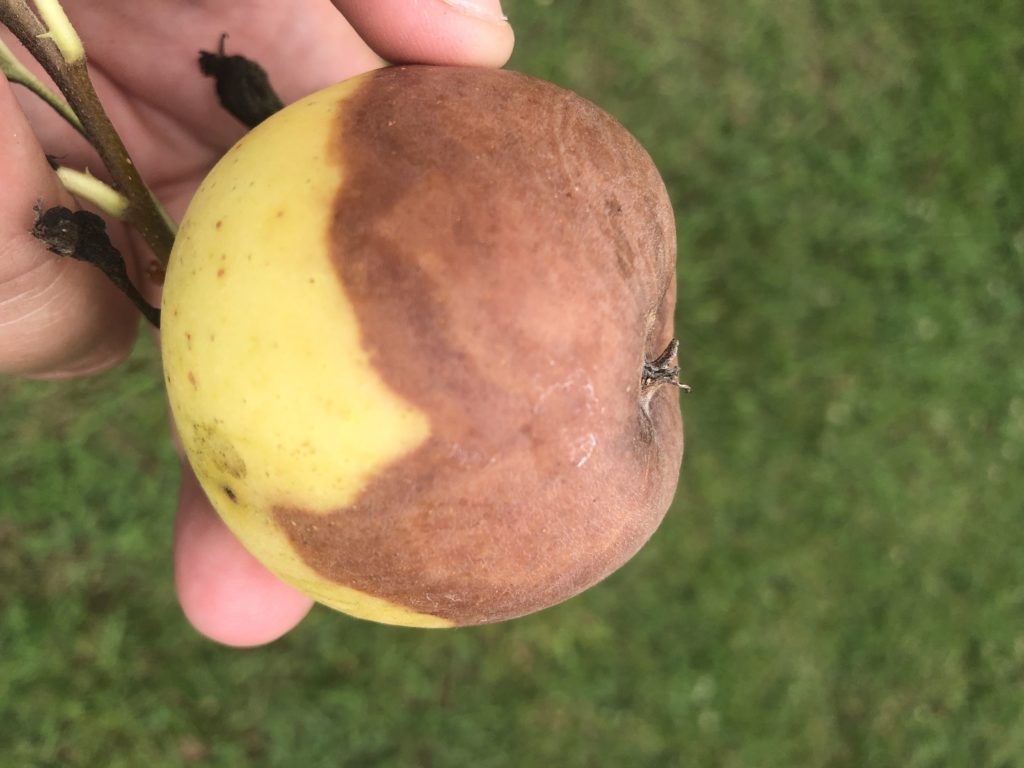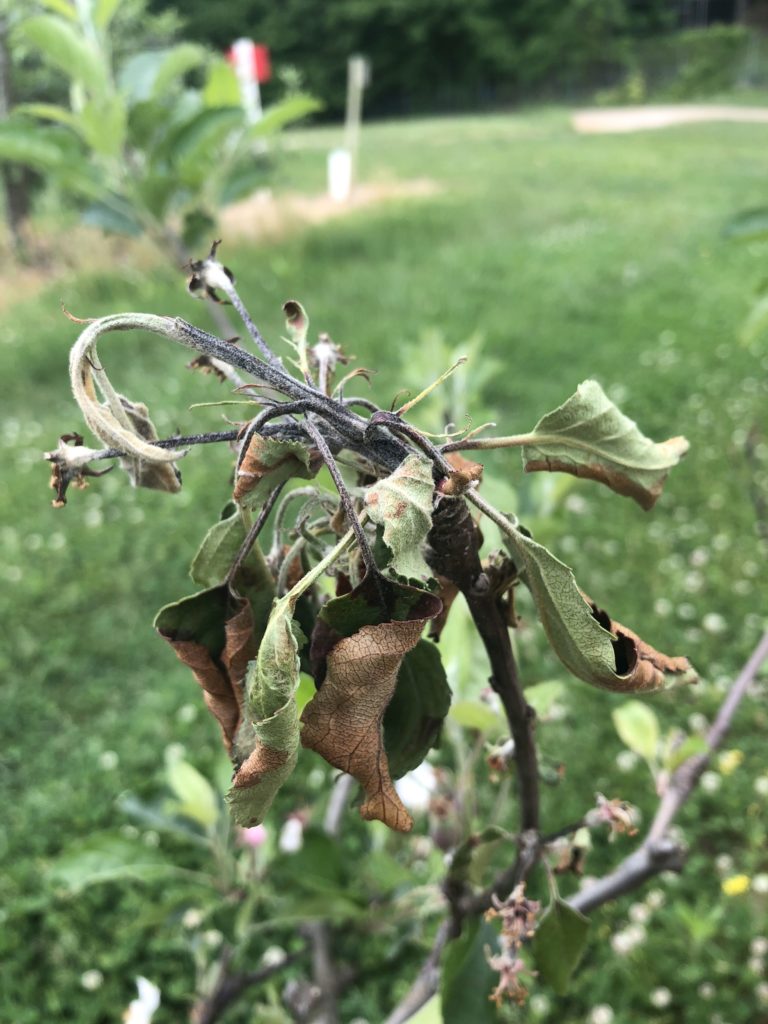Apple Disease Update: June 2, 2020
go.ncsu.edu/readext?698058
en Español / em Português
El inglés es el idioma de control de esta página. En la medida en que haya algún conflicto entre la traducción al inglés y la traducción, el inglés prevalece.
Al hacer clic en el enlace de traducción se activa un servicio de traducción gratuito para convertir la página al español. Al igual que con cualquier traducción por Internet, la conversión no es sensible al contexto y puede que no traduzca el texto en su significado original. NC State Extension no garantiza la exactitud del texto traducido. Por favor, tenga en cuenta que algunas aplicaciones y/o servicios pueden no funcionar como se espera cuando se traducen.
Português
Inglês é o idioma de controle desta página. Na medida que haja algum conflito entre o texto original em Inglês e a tradução, o Inglês prevalece.
Ao clicar no link de tradução, um serviço gratuito de tradução será ativado para converter a página para o Português. Como em qualquer tradução pela internet, a conversão não é sensivel ao contexto e pode não ocorrer a tradução para o significado orginal. O serviço de Extensão da Carolina do Norte (NC State Extension) não garante a exatidão do texto traduzido. Por favor, observe que algumas funções ou serviços podem não funcionar como esperado após a tradução.
English
English is the controlling language of this page. To the extent there is any conflict between the English text and the translation, English controls.
Clicking on the translation link activates a free translation service to convert the page to Spanish. As with any Internet translation, the conversion is not context-sensitive and may not translate the text to its original meaning. NC State Extension does not guarantee the accuracy of the translated text. Please note that some applications and/or services may not function as expected when translated.
Collapse ▲A few days without rain should provide an opportunity to cover your trees before the next downpour. Although rains are forecast for Wednesday, Thursday, and Friday in the western part of NC, you should have a window to apply a fungicide prior to the weekend. At this point, I’m going to assume that many of you have applied one or two applications of a strobilurin (FRAC 11) fungicide-either as a stand-alone product (e.g. Flint, Sovran) or as part of a formulated premix (e.g. Merivon, Luna Sensation, Pristine). If you haven’t, consider a strobilurin tank mixed with captan for this week’s fungicide application. Besides having excellent control against Glomerella, the stroby should also provide excellent control against bot rots, frogeye leaf spot, powdery mildew, apple scab, and flyspeck/sooty blotch.
Speaking of those other diseases, so far I’ve been shocked to not find any scab in our research orchard. However, I continue to observe quite a bit of frogeye leaf spot and powdery mildew. As we’ve discussed in other recent posts, Botryosphaeria obtusa, the fungus that causes frogeye, is the same fungus that causes black rot on fruit. Management for the leaf spot should really be initiated earlier in the season and involve a strong cultural (mummy removal, pruning cankers) and fungicide management program (e.g. captan plus thiophanate methyl). In contrast to bitter rot symptoms, there is usually only one point of infection (lesion) on a fruit with black rot, usually initiated on the calyx end (see photo below). 
While rating a fire blight trial in a ‘Gala’ research orchard yesterday I also observed a surprising amount of powdery mildew on the leaves (see photo below). Up in the Northeast where I come from, we usually wouldn’t worry much about new infections as we moved into the summer months. This is because the risk of infection decreases sharply as leaves age. In contrast to NY, where terminals set and we don’t see much new growth throughout the summer, apple trees in NC often have new flushes of growth throughout the season. These new leaves are HIGHLY susceptible to mildew. If you are strictly using protectant fungicides like captan or mancozeb in your summer covers, I’d consider an application of a DMI chemistry like Rally, Topguard, or Procure every other spray -particularly in highly susceptible cultivars like Jonagold, Rome Beauty (or apparently Gala). Also keep an eye out for powdery mildew in your new blocks. 
To now return to my original paragraph about what to consider spraying this week if you’ve already sprayed a strobilurin spray twice:
- Captan (3/4 rate) + thiophanate methyl (e.g. Topsin M): This should offer a high level of protection against flyspeck/sooty blotch and the higher rate of captan will also provide very good to excellent protection against GLS and bitter rot.
- Captan (3/4 rate) + Rally 40 WSP or Topguard or Procure: This should offer a decent level of protection against flyspeck/sooty blotch, excellent protection against powdery mildew and the higher rate of captan will also provide very good to excellent protection against GLS and bitter rot.
- Captan (1/2 rate) + Ziram (3 lb/A): You’ll get very good to excellent control against GLS/bitter rot, and moderate to good control against scab and FSSB. This will not provide good control against powdery mildew.
One final reminder: Please scout your orchards for shoot blight!! Blossom blight infections that were missed or new shoot blight infections likely occurred during the rains. If you see shoot blight and cannot get out to remove it IN DRY WEATHER, consider an application of prohexadione calcium (Kudos or Apogee) to try to slow things down before pruning.



